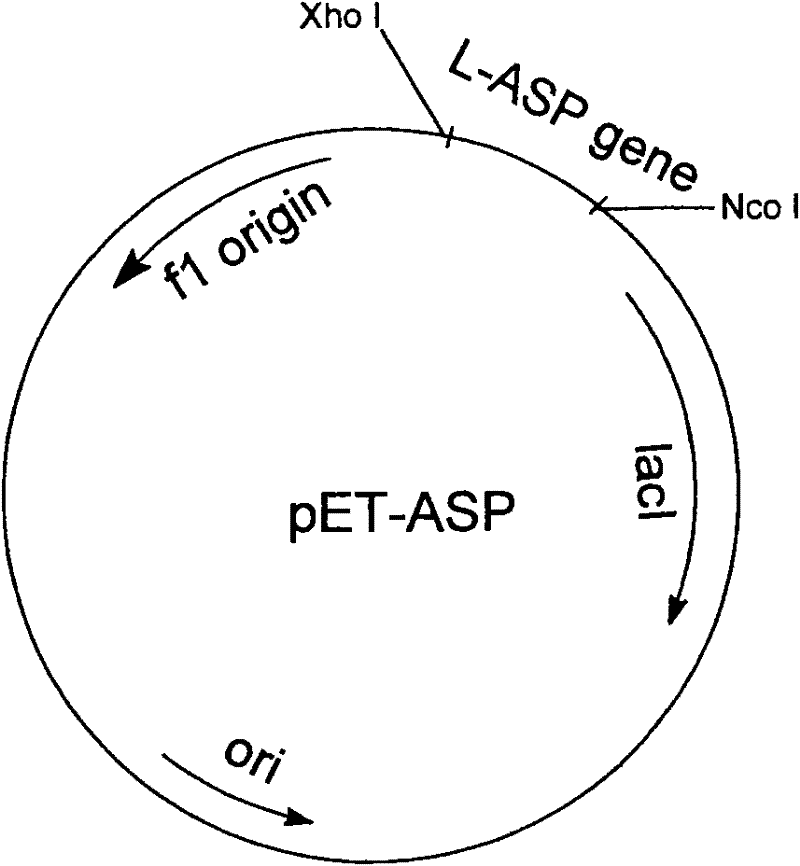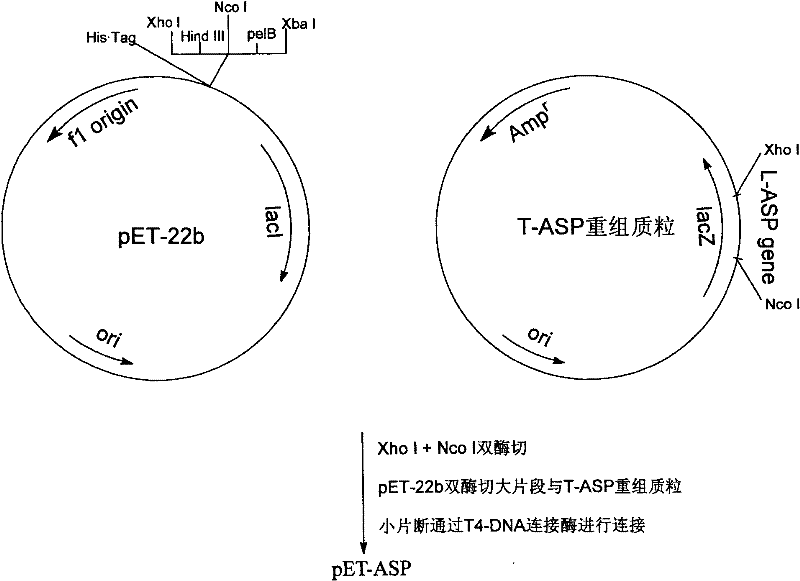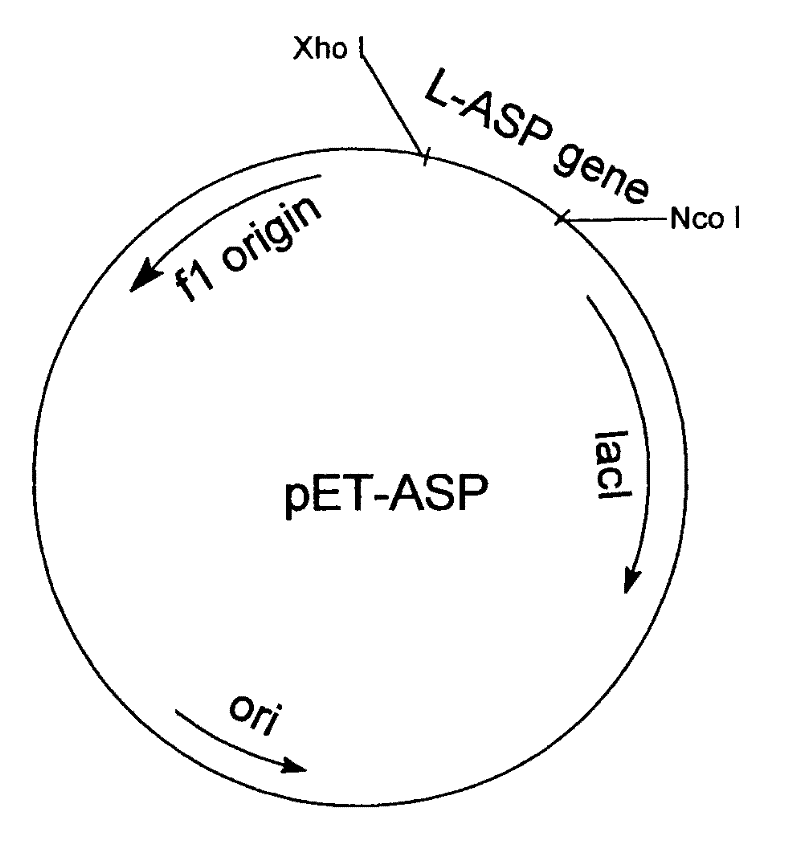Engineering bacteria for producing L-asparaginase II and construction method and applications thereof
A technology for asparaginase and construction method, which is applied in the field of engineering bacteria expressing L-asparaginase II extracellularly, can solve problems such as less extracellular expression, and achieve less separation and purification steps, low cost and high yield Effect
- Summary
- Abstract
- Description
- Claims
- Application Information
AI Technical Summary
Problems solved by technology
Method used
Image
Examples
Embodiment 1
[0055] Construct L-asparaginase engineering bacterium and cultivate this engineering bacterium according to above-mentioned five-step process method, a specific embodiment is as follows:
[0056] Firstly, the known strain Escherichia coli JM109 was isolated and the chromosomal DNA was extracted. Mainly: the JM109 culture medium cultivated overnight at 37°C was collected by centrifugation, added lysozyme to a final concentration of 1 mg / mL, reacted at 0°C for 15 minutes, added RNase to a final concentration of 100 μg / mL, reacted at 37°C for 30 minutes, and added proteinase K to the final The concentration was 100 μg / mL, after 2 h at 37 °C, the protein was extracted 5 times with phenol: chloroform (1:1), the water phase was removed, 1 / 10 volume of 3 mol / L sodium acetate solution was added, and 2.5 times the volume of -20 °C pre- Cold anhydrous ethanol, after careful mixing, use a sterile toothpick to wind clockwise to take out the precipitated DNA, put it in TE buffer at 4°C to ...
Embodiment 2
[0064] In this example, the method and conditions are the same as those in Example 1, except that the final concentration of the inducer added is 5 g / L. The L-asparaginase activity in the obtained fermentation broth was 39.6U / mL.
Embodiment 3
[0066] In this example, the method and conditions are the same as those in Example 1, except that the fermentation of the engineered bacteria is carried out in a 5-liter fermenter, and the inducer is changed from IPTG to lactose.
[0067] The engineered bacteria slant was inserted into a 250mL Erlenmeyer flask containing 50mL seed medium that had been sterilized, and cultivated overnight at 37°C.
[0068] 3 L of fermentation medium (70 g / L corn steep liquor, 8 g / L glycerol, pH 7.2) was loaded into a 5 L fermenter, sterilized at 0.15 MPa for 30 min, and 30 mL of the above overnight culture solution was added. Cultivate at 37°C for 8 hours, add the inducer lactose, the final concentration is 3g / L, continue to cultivate for 12 hours, and finally the activity of L-asparaginase in the fermentation broth is 32.4U / mL.
PUM
 Login to View More
Login to View More Abstract
Description
Claims
Application Information
 Login to View More
Login to View More - R&D
- Intellectual Property
- Life Sciences
- Materials
- Tech Scout
- Unparalleled Data Quality
- Higher Quality Content
- 60% Fewer Hallucinations
Browse by: Latest US Patents, China's latest patents, Technical Efficacy Thesaurus, Application Domain, Technology Topic, Popular Technical Reports.
© 2025 PatSnap. All rights reserved.Legal|Privacy policy|Modern Slavery Act Transparency Statement|Sitemap|About US| Contact US: help@patsnap.com



